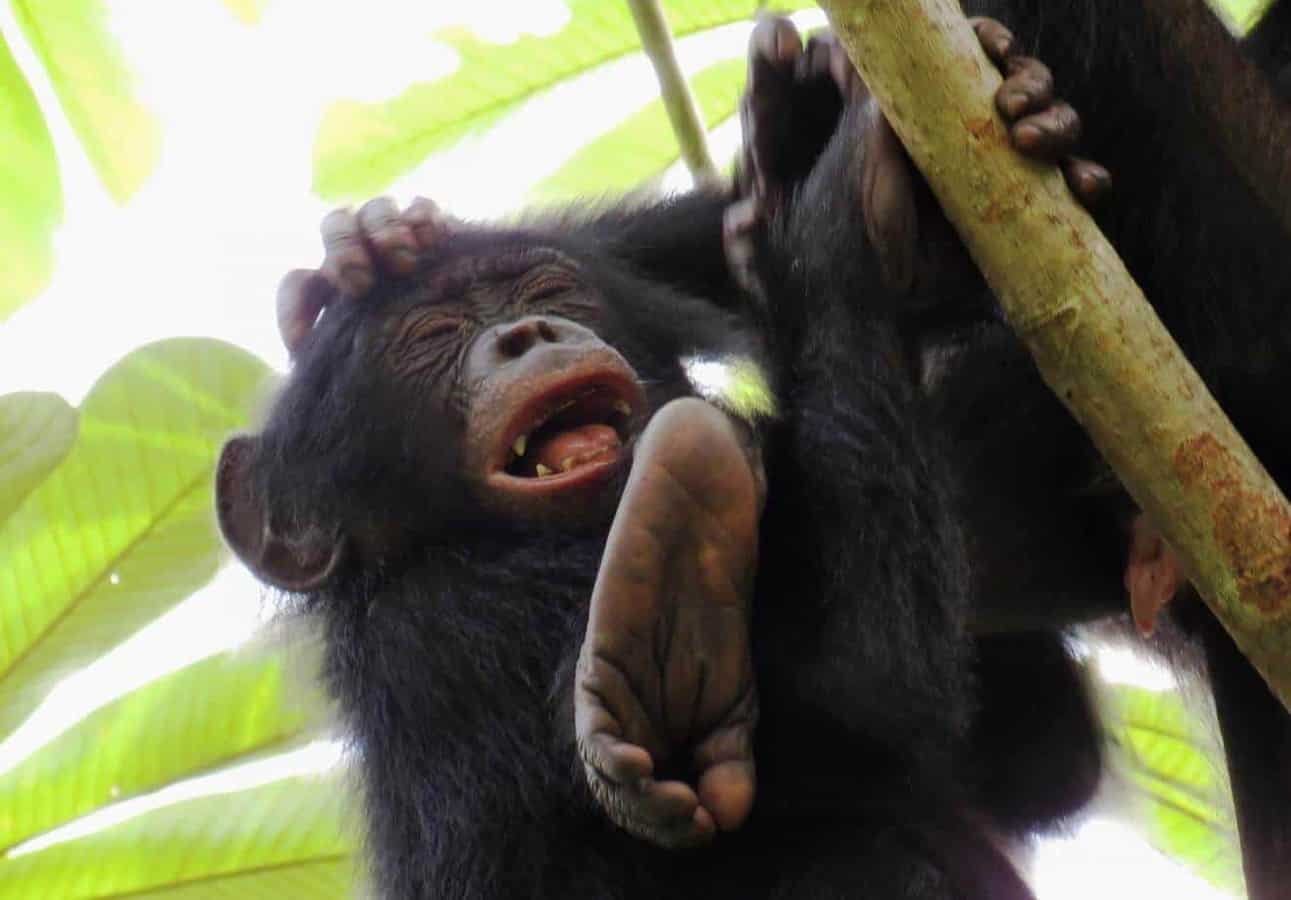Bonobos can make 28 distinct facial movements, from subtle nostril flares to dramatic lip funneling, according to new research that finally gives scientists a systematic way to decode our closest relatives’ complex emotional lives.
The study represents the first comprehensive analysis of bonobo facial expressions using standardized scientific methods.
An international research team successfully adapted the Chimpanzee Facial Action Coding System (ChimpFACS) to work with bonobos, creating what amounts to a facial expression dictionary for these endangered great apes. The work fills a critical gap in primate communication research and provides new tools for understanding how bonobos navigate their famously peaceful societies.
Beyond What Meets the Eye
The researchers discovered that bonobos possess 22 distinct muscle-driven facial movements, plus three additional action descriptors and three ear movements. While this represents fewer expressions than humans can produce, it matches the facial repertoire of chimpanzees and demonstrates remarkable complexity in bonobo communication.
What makes this research particularly intriguing is how it reveals the anatomical basis of bonobo expressions. The team found that bonobos can independently control specific facial muscles in ways that create subtle but meaningful differences in their expressions. For example, they can raise just their inner eyebrows or flare their nostrils independently—movements that require precise muscular control.
The study also uncovered several facial movements in bonobos that weren’t documented in the original ChimpFACS system, including what researchers call “glabella lowering”—essentially a type of frowning movement between the eyebrows that may be more common in bonobos than chimpanzees.
The Science Behind Bonobo Smiles
One of the most fascinating discoveries involves how bonobos use their distinctively bright pink lips to communicate. The researchers found that the contrasting lip color actually makes certain facial movements more visible and easier to detect than in chimpanzees, potentially giving bonobos an advantage in visual communication.
“This adaptation of ChimpFACS for bonobos fills an important gap in our ability to study facial expressions across different primate species,” explains lead researcher Dr. Catia Correia-Caeiro from Leipzig University. “We can now systematically compare facial movements between humans, chimpanzees, and bonobos, offering insights into the evolution of facial communication.”
The research team analyzed over 500 videos totaling approximately 55 hours of footage, examining bonobos in various settings from zoos to wild populations in the Democratic Republic of Congo. They documented each facial movement frame by frame, linking specific muscle contractions to visible changes in facial appearance.
Implications for Understanding Peaceful Societies
The timing of this research is particularly significant given ongoing debates about bonobo social behavior. While bonobos are often characterized as more peaceful than chimpanzees, recent studies have challenged this view by documenting higher levels of male-male aggression than previously thought.
The new facial coding system could help resolve these conflicting findings by providing objective measures of emotional expression during different social interactions. Previous studies relied on subjective descriptions of facial behaviors, making it difficult to compare results across different research groups.
The research reveals important differences in how bonobos and chimpanzees might use facial expressions. Some facial movements that are difficult to detect in chimpanzees appear more prominent in bonobos, potentially reflecting their different social structures and communication needs.
Technical Breakthroughs and Challenges
One of the study’s most significant technical achievements was establishing reliable methods for distinguishing between similar facial movements. For instance, the researchers had to develop precise criteria for differentiating between a genuine eyebrow raise and the simple release of an eyebrow-lowering movement—distinctions that require frame-by-frame video analysis.
The black skin color of bonobos presented unique challenges for the research team, making certain facial wrinkles and skin movements harder to detect than in lighter-skinned primates. However, the researchers developed workarounds by focusing on movement patterns and using high-definition recording equipment.
Looking Forward
The new system has immediate practical applications for bonobo welfare in captivity. “This tool will be particularly valuable for assessing the welfare of bonobos in human care,” notes Dr. Correia-Caeiro. “By better understanding their facial expressions, we can more accurately gauge their emotional states and well-being.”
Perhaps more importantly, the research opens doors for comparative studies across all great ape species. With standardized facial coding systems now available for humans, chimpanzees, bonobos, orangutans, and gorillas, scientists can begin mapping the evolutionary history of facial communication in unprecedented detail.
The researchers suggest their findings might help explain why facial communication evolved to be so important in primate societies. The ability to produce and interpret complex facial expressions may have been crucial for managing the intricate social relationships that characterize great ape communities.
This work represents more than just cataloging facial movements—it’s about understanding how our closest relatives experience and communicate emotions, offering new windows into the minds of some of our planet’s most endangered species.
Related
Discover more from Wild Science
Subscribe to get the latest posts sent to your email.





















































